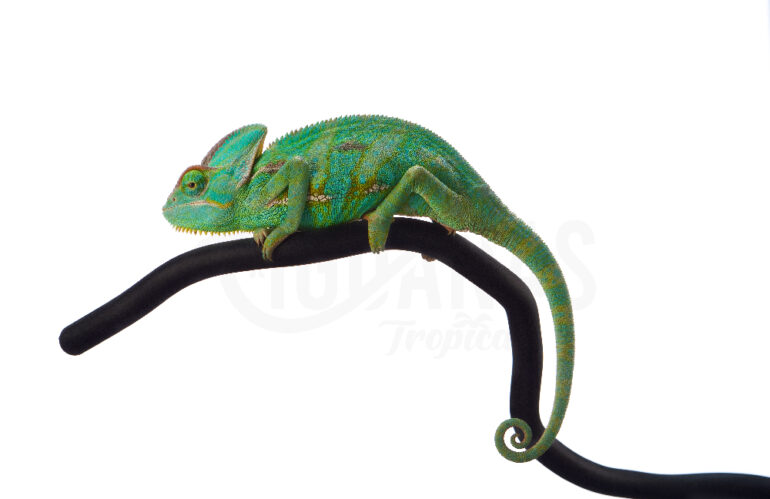Veiled chameleons are known for their unique appearance and behavior. They are native to the Arabian Peninsula and are popular as pets due to their fascinating personalities and interesting physical features. Here are some important tips for caring for your veiled chameleon:
Housing:
A single adult veiled chameleon requires a minimum enclosure size of 2’x2’x4′ (length x width x height).
The enclosure should be well-ventilated with screened walls and a screened top to allow for proper airflow.
Provide plenty of climbing opportunities, such as branches or vines, and a basking area with a heat lamp to mimic their natural habitat.
Maintain a temperature gradient from 75-85°F on the cool side of the enclosure to 85-95°F on the warm side, with a basking spot reaching 100-105°F.
Use a UVB bulb to provide 10-12 hours of UVB light per day.
Diet:
Veiled chameleons are primarily insectivorous, so a diet of live insects such as crickets, mealworms, and dubia roaches is recommended.
Provide a variety of insects and supplement with calcium and vitamin D3 to prevent nutritional deficiencies.
Adult veiled chameleons may also eat small amounts of dark leafy greens and vegetables.
Hydration:
Provide a shallow water dish for soaking and drinking, and mist the enclosure daily to maintain proper humidity levels.
Veiled chameleons may also drink from droplets on leaves or the enclosure walls.
Behavior:
Veiled chameleons are solitary animals and should be housed alone.
They may become stressed if handled excessively or improperly, so limit handling to a minimum and always support their entire body.
Veiled chameleons may also change color and puff up their throat (known as “flaring”) as a form of communication or display.
Overall, veiled chameleons require specific care to thrive in captivity. By providing proper housing, diet, hydration, and handling, you can help ensure a healthy and happy life for your pet chameleon.

